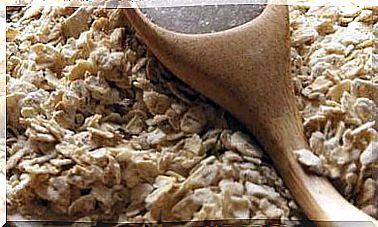Let’s Talk Clearly About Carbohydrates
Carbohydrates, carbohydrates or carbohydrates are essential nutrients. They are not a mere source of energy, but substances that play a crucial role in the body.

Most people know that refined sugar should be eaten in moderation, because it only provides calories that are quickly assimilated, free of any other nutrient.
There are even those who consider that it is an addictive substance, which replaces other healthier ones in the diet and favors the ups and downs of energy and mood, so common today.
The truth is that the fame of sugar has contaminated the image of carbohydrates that, due to their kinship with it, today tend to be seen as a mere source of calories.
However, the old term “carbohydrates” encompasses an enormous variety of compounds that intervene in the functioning of the body in ways that are only now becoming known.
There are good sugars and bad sugars
For this reason, when choosing foods it is important to know how to distinguish between the different types of sugars and carbohydrates, since some are associated with the risk of suffering from certain diseases, while others, on the other hand, prevent them.
In our country, the consumption of refined sugar – sucrose – is between 600 grams and one kilo per week per person. Studies indicate that this high amount is related to the incidence of obesity, diabetes, digestive disorders, infections, cardiovascular diseases and even colon cancer.
Some experts – such as Professor Robert Lustig, one of the world’s leading authorities on obesity – are beginning to consider some types of sugar as addictive substances given their effects on the brain (they cause feelings of pleasure and withdrawal similar to those of certain drugs) .
Essential for immunity
On the other hand, other types of sugars are essential for the functioning of the body. Glycobiology is the new science that studies the role of carbohydrates or, more precisely, molecules called glycans, in the correct functioning of the immune system and many other physiological processes.
For this science, sugars are much more than calories. Combining with each other and with amino acids (glycoproteins) and fatty acids (glycolipids) they are essential, for example, for immune cells to identify and eliminate infectious agents or precancerous cells.
In fact, they are part of a very complex – and practically unknown – communication system between cells, and their study is as important as that of genes can be.
Research on glycans is expected to uncover new treatments that help the immune system kill cancer cells and viruses like HIV, or help cure autoimmune diseases. Some are already helping to understand the effects of food and medicinal plants.
For example, a combination of sugars in birch has been found to be effective against ear infections. Another line of research works with the regeneration of damaged nervous tissue in cases that until now had been considered impossible to treat.
Sweet since before birth
Human life is surrounded by sugars since its inception. When the sperm reach the egg, it checks the sugar combinations and allows the one with the correct “key” to pass.
In the womb, the fetus swims in the amniotic fluid, which not only offers protection, but also nourishes it. Glucose is in this nutrient solution, along with protein, sodium, potassium, and other elements.
When the baby is born, the food it receives from its mother is rich in glucose and other basic sugars, such as fucose, n-acetylglucosamine, and n-acetylneuraminic acid. Babies sip breast milk, slightly sweet, which can only be beneficial.
The problems appear when adults have to decide the ingredients of their diet. Apparently, the preference for sweets is partly determined by genes.
It is a safe taste for the human species because, unlike bitter, it is not usually related in nature with toxic agents. It is also associated with obtaining energy. That is why it is not surprising that, when producing food, human beings have surrounded themselves with sweets.
But there is still another reason for the food industry to use so much sugar and that is that they favor the preservation of food. Between one thing and another, the result is that we now consume some forms of sugar in excess.
The different types of sugars
If you want to reduce your intake and look for sugars in the ingredient lists, you will find a long series of confusing or unknown terms : fructose, glucose, lactose, maltose, sucrose, maltodextrin, invert sugar, xylitol, dextrin, maltol, isomaltol, oligofructose, corn syrup, lactate, sorbitol, galactose, levulose …
They are all sugars, but their action can be very different:
- Fructose is part of many fruits; however, consuming it in excess in its isolated version overloads the liver, apart from turning into fat more easily than other sugars.
- Corn syrup, widely used by the food industry, is considered one of the main causes of the high obesity figures in the United States.
- Maltodextrin are glucose chains that induce a rapid rise in blood sugar.
- Invert sugar is a combination of glucose and fructose, sweeter than common sugar, which is used in ice cream because it makes it difficult for ice crystals to form.
- The Xylitol has the advantage of not causing tooth decay and is suitable for diabetics because their metabolism does not require insulin, although it is somewhat laxative.
In order not to get lost in the labyrinth of carbohydrates, it is convenient to know that they are composed of saccharides, also called monosaccharides or simple sugars, composed of hydrogen, oxygen and carbon.
The most common, known and abundant in foods are glucose, galactose and fructose. For the body, the most important is glucose, as it is the main fuel for its cells, including those of the brain. In fact, the body can synthesize it from other nutrients.
Other monosaccharides are fucose, mannose, and xylose, which can only be found in some fungi and plants.
Disaccharides are formed by the union of two monosaccharides. The most common are:
- Sucrose or common sugar –formed by the union of glucose and fructose–
- Lactose –glucose and galactose–, which is the sugar in milk,
- Maltose – two glucose molecules –
The beneficial oligosaccharides
Saccharides and disaccharides are sugars and share characteristics, such as being crystalline, sweet, and white. When they occur in larger molecules – oligosaccharides and polysaccharides – they give rise to starches and fibers, which have different properties. At first, they lose the intensity of the sweet flavor.
Oligosaccharides are composed of between three and ten monosaccharides and when they are made by the body itself, they can play an important role in the communication system between cells. Two interesting classes are:
- Fructooligosaccharides (FOS) consist of a chain of fructose molecules. It abounds in foods such as artichoke, onion, asparagus, endive, leek or banana and they serve to feed the flora and improve the state of the gastrointestinal tract.
- Galactooligosaccharides (GOS), which are chains of galacts and are abundant in soybeans. Both FOS and GOS are not completely digested, but the part that is not assimilated serves as food for the intestinal flora, favoring the growth of beneficial bacteria populations and reducing harmful ones.
One proof of the importance of oligosaccharides is that breast milk contains about 130 different ones. These combinations of 3 to 6 simple sugars probably have a lot to do with the beneficial effects on the development of the baby, especially its immune system and digestive flora.
Fiber and starches
Gut bacteria also feed on inulin, a type of fiber made up of fructose chains, straddling oligosaccharides and polysaccharides.
It is not digested, although it does release some fructose as it passes through the small intestine. There it is broken down by the lactobacilli and bifidobacteria of the microbiota, which favors its growth and gives rise to short-chain fatty acids, carbon dioxide, hydrogen and methane.
That is why foods rich in inulin, such as garlic, onion, leek or asparagus, are highly recommended, although they can cause flatulence and intestinal discomfort in people who are not used to them. It is therefore advisable to consume them in small amounts at first, until the body gets used to digesting them.
Other types of soluble fibers with beneficial effects are mucilages and pectins.
- The mucilage are highly branched polysaccharide of simple sugars, viscous nature, soothing and desinflaman the digestive system. They are found in certain algae, in flax seeds (they must be soaked overnight), okra, green beans, carob, borage, purslane …
- The pectins are found in the skin of fruits such as apples or citrus pulp, strawberry, quince and carrot. They retain water easily, forming viscous gels that are fermented by intestinal microorganisms. Some studies indicate that pectins bind to a protein characteristic of tumor cells, favoring their elimination.
In polysaccharides, up to millions of molecules of one or more monosaccharides are linked. That is why they can fulfill multiple functions in plants: energy reserve, structure, support … Among the energy polysaccharides are the starches of rice or potatoes, which our digestive enzymes can break down into their simplest elements in order to provide energy to the cells.
Resistant starch. A part of the carbohydrates from tubers such as potatoes resists the action of digestive enzymes in the small intestine and is finally assimilated in the large intestine. It has many of the properties of fiber and is considered beneficial for the control of sugar and cholesterol. It is also found in legumes and plantain.
However, other polysaccharides, such as cellulose and hemicellulose, cannot be digested. It is insoluble fiber, which is also a carbohydrate, that is, a combination of sugars, although in the food composition tables it is not counted as such because it is not considered a nutrient.
This insoluble fiber acts as a cleaning brush on digestion residues that adhere to the intestinal walls. It also increases the volume of feces and softens them, which favors its transit and elimination. This explains that when taken daily in sufficient quantities, it avoids constipation and prevents diseases, including digestive cancers.
The importance of absorption rate
The digestive system of the human being is prepared to obtain most of the energy from polysaccharides, and only a small part, from monosaccharides and disaccharides.
It has enzymes to break them down and convert starch into glucose, and it needs soluble fiber to feed the intestinal microbiota, which in turn is essential to assimilate nutrients and neutralize toxins, bacteria and viruses.
On the other hand, soluble fiber, common for example in apples, absorbs water and turns into a gel during digestion, which slows down the digestive process even more.
The speed of absorption is a key element when it comes to distinguishing the carbohydrates that should occupy a preferential place in the daily diet. Those that combine starch and fiber are digested slowly, so they release glucose little by little into the blood, so that its levels remain stable. These foods are said to be slow absorbing and low glycemic load.
In contrast, simple sugars tend to quickly raise glucose levels, so the pancreas must secrete insulin so that they do not reach dangerous limits.
If the diet rich in simple sugars continues, insulin becomes less effective, glucose levels rise, and diabetes can develop. At the same time there is a tendency to gain weight because the obtaining of calories is usually higher than usual. The type of carbohydrates that favor this process are said to be rapidly absorbed and have a high glycemic load.
What are glycemic load and index?
The glycemic load is a more reliable value than the glycemic index to assess the rate of absorption of carbohydrates from a food. The advantage of the glycemic load is that it takes into account the size of the servings and the amount of carbohydrates in a particular food.
Thus, foods such as bananas, grapes or carrots, which were previously discouraged for diabetics or overweight people, are now recommended because they do not have a high glycemic load although their glycemic index is quite high.
The foods with the highest glycemic load are refined cereals, flours, syrups, pastries and other products processed from cereals or sugars.
On the other hand, those with a low load are vegetables, greens, fruits, legumes and whole grains.
Diets that are rich in the latter and poor in the former not only do not contribute to obesity and diabetes, but also prevent cardiovascular disease and cancer, especially breast cancer, as a study by the Karolinska Institute of Stockholm (Sweden).
What the latest discoveries about carbohydrates teach is that their role goes beyond providing energy in the form of glucose to cells. They show that, while the body can synthesize any combination of sugars it needs, whole, natural foods provide complex sugars already formed that are essential for maintaining health.
Consequently, the recommendation is to give an important place in the diet to foods that provide oligosaccharides and polysaccharides, that is, slowly absorbed carbohydrates, and to reduce the presence of simple sugars, especially those that have been extracted from whole foods to use as additives.
Carbohydrates in the daily diet
The pyramid of the Mediterranean diet has cereals at its base, since carbohydrates or carbohydrates are the nutrient that the body needs in greater quantity. But not all the ways to obtain them are equally healthy.
It is advisable to eat at least three pieces of fruit daily , especially varieties rich in fiber, such as apple. The speed of absorption of its sugars is slow. Only some fruits, such as grapes, directly provide glucose. In this case the portion must be moderate.
At least 5 servings of vegetables are added to the fruit , such as tomatoes, peppers, lettuce, cabbages, leeks, onions, or garlic, among many others. They mainly provide soluble fiber.
The rest of carbohydrates are obtained from whole grains and legumes. Together with fruits they should provide the 275-375 g of carbohydrates that are needed daily.
The preparation and handling that the food has undergone is also important:
- Al dente pasta absorbs more slowly than overcooked pasta.
- Whole wheat bread is not only the one that appears darker than white because bran – the husk of the wheat grain – has been added to the refined flour, but also the one that contains the germ of wheat, the most nutritious part of the grain. Rustic, dense breads that show broken seeds are especially recommended , and organic if possible.
The rate of absorption of a food is modified by the characteristics of the rest of the ingredients in a complete meal. Thus, for example, the speed of absorption of carbohydrates from potatoes can be reduced by accompanying them with foods rich in fiber, such as cabbage or peppers, dressing the salad with vinegar or lemon juice, or having a dessert based on acid fruits.
Sweet taste without consequences
The WHO recommends that the so-called “free sugar”, that is, that which is added by manufacturers or by consumers to foods to sweeten them, is a maximum of 10% of total carbohydrates. However, it is advisable to moderate or reduce the consumption of sugary breakfast cereals, sugary carbonated drinks, pastry and chocolate sweets, coffee or infusions with sugar.
Good alternatives to sugar are unrefined products that are obtained by simple manipulations. These include whole cane sugar, coconut sugar and xylitol.
The stevia ( Stevia rebaudiana ) containing agents (stevioside) very sweet flavor that are not digested and therefore do not provide calories. Refined steviosides are sold as a liquid, powdered, or tablet sweetener. Consuming dried leaf powder has the advantage that not only does it not provide calories, but it also helps lower blood glucose and blood pressure levels.









